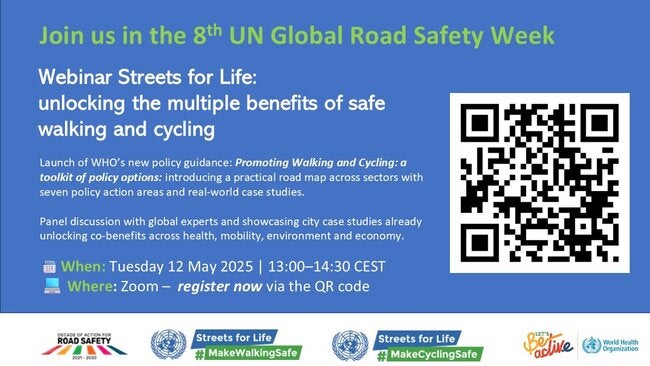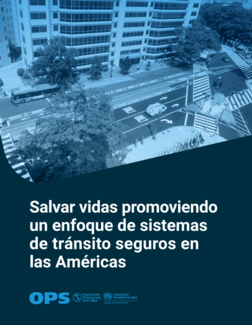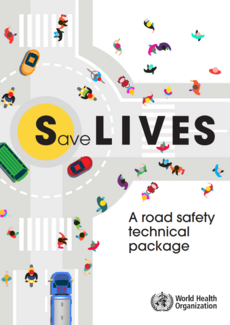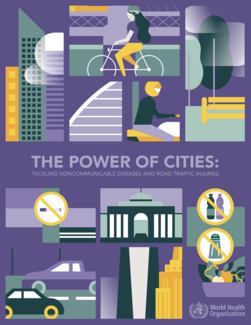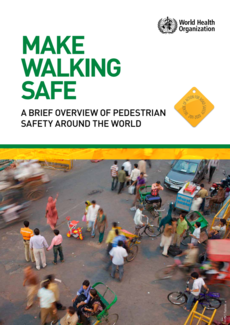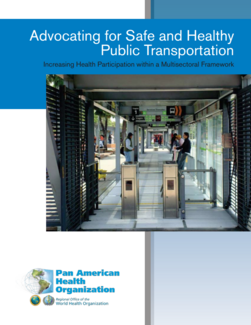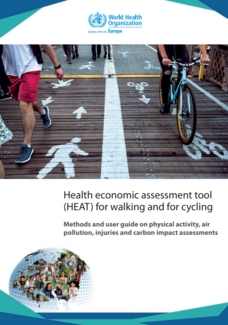Road traffic injuries are a leading cause of death and disability worldwide, with nearly 1.2 million people killed and as many as 50 million people injured each year. They are the leading killer of young people aged 5-29 years. Globally, more than 1 of every 4 deaths occur among pedestrians and cyclists.
The Global Plan for the Decade of Action for Road Safety 2021-2030 reflects an ambitious target to reduce road traffic deaths and injuries by 50% by 2030. It highlights that they can be prevented by addressing the whole of the transport system, taking action to ensure safe roads, vehicles and behaviours as well as to improve emergency care.
PAHO/WHO, in collaboration with partners, organizes periodic UN Global Road Safety Weeks. The 8th UN Global Road Safety Week offers an opportunity to spur action at national and local levels to make walking and cycling safe, by highlighting concrete and specific interventions that can be taken by different stakeholders – governments, international agencies, civil society, businesses and schools.
These actions will help promote and facilitate a shift to walking and cycling, which are more healthy, green, sustainable and economically advantageous modes of transport. This will also contribute, directly and indirectly, to the attainment of many Sustainable Development Goals. PAHO/WHO invites all road safety and sustainable mobility partners to mark the 8th UN Global Road Safety Week by organizing events and activities and sharing messages, materials and resources.
Data from the Americas
- Traffic injuries claimed the lives of 145,090 people in the Americas Region during 2021, representing 12% of estimated deaths worldwide.
- The most affected victims are vulnerable road users, such as pedestrians, cyclists, and motorcyclists, who are exposed to greater risks on the roads.
- There has been a significant increase in motorcyclist deaths, which went from representing 12% of total deaths in 2009 to 27% in 2021, highlighting a growing problem that requires urgent attention.
Key Messages
Less than one third of countries have policies to promote both walking and cycling. Yet walking and cycling can impact favorably on health and the environment, through reductions in heart and lung disease, cancer and diabetes and decreases in air and noise pollution. These modes also contribute to sustainable urbanization, meaning cities that are built for the well-being of humans and the environment and which enhances social connection. Safe walking and cycling also help to promote more equitable societies, where people of all socioeconomic levels have the same degree of access to what their cities offer.
According to the Global status report on road safety 2023, pedestrians and cyclists make up around 21% and 5%, respectively, of the 1.19 million road traffic deaths annually – nearly 310,000 deaths. During the previous decade 2011-2020, pedestrian deaths declined slightly, while cyclist deaths remained constant. Still, there were significant variations across regions. For example, deaths among pedestrians increased by 42% in the South-East Asia Region and deaths among cyclists increased by 50% in the European Region and by 88% in the Western Pacific Region. The International Road Assessment Programme highlights that only 21% of roads for pedestrians and 23% of roads for cyclists meet their 3-star or better rating for these groups.
There are many tried-and-true interventions to enhance the safety of pedestrians and cyclists, corresponding to all elements of the safe system approach to road safety, among others: safe road design; safe vehicles; safe speeds; safe behaviours; and timely, lifesaving emergency care. These interventions align with guidance issued by WHO and partners, including the Global Alliance of NGOs for Road Safety and its priority interventions. Governments and their partners must adopt these in order to keep pedestrians and cyclists safe and reap the inherent rewards of walking and cycling to individuals and societies at large.
It is anticipated that by 2030 around 70% of the global population will live in cities. In this context the rising demand for mobility is set to overwhelm transport systems, particularly those that rely heavily on private vehicles. Walking, cycling and public transport are integral to the multimodal transport systems called for in the Global Plan for the Decade of Action for Road Safety 2021-2030. Such systems optimize the mix of motorized and non-motorized transport modes. They ensure equitable access to mobility for all, by favoring those modes that are safe, affordable, accessible and sustainable.
The externalities of transport systems centered around private vehicles include road traffic deaths and injuries, physical inactivity, pollution and the costs of road building and maintenance. Walking and cycling, on the other hand, are cost-effective modes, benefitting individuals, communities, and societies as a whole. The provision of safe walking and cycling has been shown to increase retail sales for businesses, positively impact property values, provide jobs, and enhance tourism. In addition, high rates of walking and cycling lead to increased public transport ridership, further adding to national and local economies. In many low- and middle-income countries, walking and cycling are already the dominant modes of transport, and these must be made safe and attractive.
Global status report on road safety 2023
Saving lives by promoting a safe transit systems approach in the Americas (only in Spanish)
Save lives: a road safety technical package
Global Plan for the Decade of Action for Road Safety 2021-2030
The power of cities: tackling noncommunicable diseases and road traffic injuries
Make walking safe: a brief overview of pedestrian safety around the world
Cyclist safety: an information resource for decision-makers and practitioners
Advocating for Safe and Healthy Public Transportation: Increasing Health Participation within a Multisectoral Framework
Health Economic Assessment Tool (HEAT) for walking and cycling



